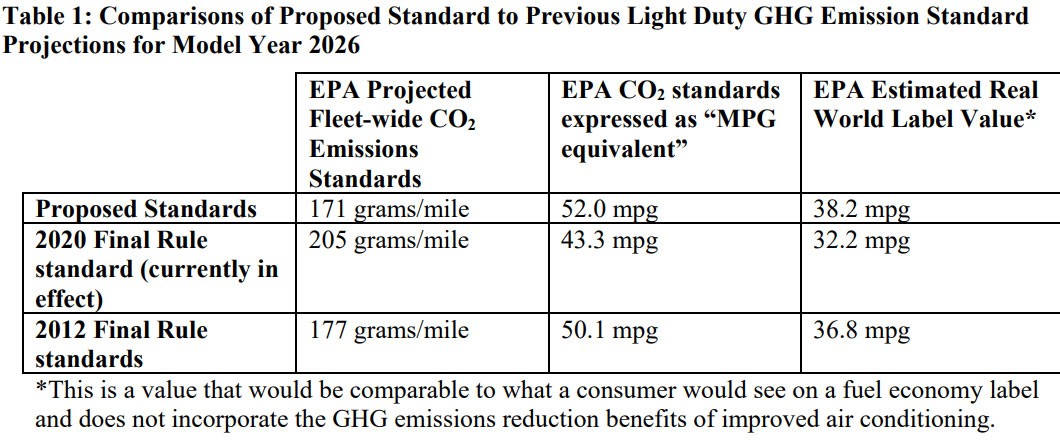Following an announcement from the White House, the Environmental Protection Agency has revealed their proposal to significantly increase fuel economy standards.
The proposed 2023-2026 model year light-duty standards aim to reverse the Trump administration’s more lenient approach and “drive 10 percent greater emissions improvement than the SAFE rule standards for MY 2023 vehicles and then 5 percent greater emissions improvement each year after.”
While the proposal is quite lengthy, the key takeaway is that 2026 MY vehicles would need to have an average real world fuel economy rating of 38.2 mpg or 52.0 mpg equivalent. That’s a huge increase from the current standard, which calls for 2026 MY vehicles to average a real world rating of 32.2 mpg or 43.3 mpg equivalent. It’s also worth noting the proposed standard is stricter than Obama era rules, which called for a real world rating of 36.8 mpg or 50.1 mpg equivalent.
Also Read: President Biden Aims For 50% Of New Vehicles To Be Electrified In 2030
The EPA estimates the cost for automakers to comply would be over $1,000 (£718 / €845) per vehicle in MY 2026. These costs would likely be passed onto consumers, but the government claimed “reduced fuel costs would outweigh the increase in vehicle costs by about $900 (£646 / €760) over the lifetime of a MY 2026 vehicle.”
While the White House touted the move would promote zero emission vehicles, that won’t happen immediately as the EPA predicts electrified models will only have an 8% market share by the 2026 model year. Instead, the government believes most of the fuel economy gains will be made possible by “advanced high-efficiency engines” and “8-speed and other advanced transmissions.”
EPA Administrator Michael S. Regan said, “These robust standards are underpinned by sound science and technical expertise, encouraging the development of technology and innovation that will drive America forward into a clean energy future. We are excited about building on the partnerships with states, cities, industry, labor, and NGO stakeholders to realize this vision together.”
Of course, it’s important to note this is simply a proposal at this point. Citizens can comment on the proposal at regulations.gov (Docket ID No. EPA-HQ-OAR-2021-0208) and the EPA will be holding a virtual public hearing on this proposal on August 25th.
EPA's proposed clean cars plan would:
Reduce greenhouse gas emissions
Expand use of clean technologies available today
Save consumers money through reduced fuel costs
Put the U.S. on track for a low-carbon transportation future
Read more here: https://t.co/YYliD1r3LT pic.twitter.com/SUmIiUPH9q
— Michael Regan, U.S. EPA (@EPAMichaelRegan) August 5, 2021






